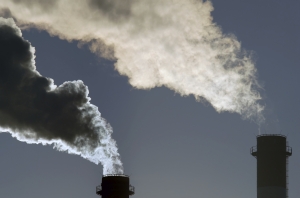MELBOURNE, April 27, 2016 – Analysis by energy and emissions market advisory firm, RepuTex, indicates that the implementation of new regulation to retire an emissions intensive brown-coal power generator from the National Electricity Market (NEM) would have “negligible” impact on electricity prices, with the plan likely to significantly reduce emissions before 2020.
RepuTex modelled the impact of introducing new policy to incentivise the closure of coal-fired power stations, whereby emissions intensive generators would competitively bid over the payment they require for closure. The cost of closure would then be paid for by power stations that remain in operation, proportional to their carbon emissions.
The plan – initially proposed by Australian National University academics Frank Jotzo and Salim Mazouz – would help to cut emissions from the electricity sector, yet would do so without the use of public funds, and without a carbon price.
RepuTex analysed the impact of the proposed policy on wholesale electricity prices, with findings indicating that removing a brown coal generator in 2017-18 would lead to just a 3 per cent increase in the average annual wholesale pool price, or just $2.20/MWh to $3.00/MWh, depending on the size of the generator retired.
For residential electricity bills, falling network costs may completely offset any cost impact of the new policy, with retail energy prices expected to fall out to 2020.
“The closure of a large coal generator is likely to have a negligible impact on residential electricity bills,” said Bret Harper, Associate Director of Research at RepuTex.
“For the retail market, we anticipate average electricity prices remaining largely stable, with potential for prices to fall as new policies refocus on energy productivity and Regulator’s lower network costs.
“If this occurs, falling retail prices would offset any cost impact of retiring a coal-fired generator,” he said.
The electricity sector is responsible for over one third of Australia’s greenhouse gas emissions, driven by the sector’s heavy reliance on coal-fired generation – which supplies over 75 per cent of the national generation mix – making Australia one of the most carbon intensive economies in the world.
Last year, the NEM recorded total emissions of 164 Mt, with RepuTex analysis indicating that closing one brown coal-fired generator in 2017-18 would reduce emissions by 2 to 6 million tonnes per year, or between 6 to 18 million tonnes over the three years to 2020, depending on the size of the generator removed.
In light of the size of Australia’s electricity emissions, a significant change in the operation of the generation sector will be required to drive the decarbonisation of the NEM to meet the government’s 2030 emissions reduction target, and to address the oversupply of generation capacity in the market.
“Removing one brown-fired generator would significantly reduce emissions from the sector,” said Mr Harper.
“Despite an established ‘oversupply’ in the system, we are unlikely to see any retirement of brown-coal generation unless this sort of policy is implemented, so the status quo will simply continue,” he said.
According to RepuTex, the expected period of largely stable electricity prices – and the potential for retail prices to fall – makes it a good time to implement policy reform at minimal cost to consumers.
“Unlike the period of climate policy development from 2007 to 2013, which took place while distribution and transmission costs were increasing, we are now likely to see downward price pressure and greater competition over the next 12 months,” said Mr Harper.
“That dynamic means it is a good time for new policy – policymakers have a window of opportunity to drive reform with minimal cost to consumers,” he said.
Under the proposal, emissions intensive generators – in this case brown-coal generators in Victoria such as Hazelwood, Loy Yang A, Loy Yang B, and Yallourn – would submit bids for how much money they would require for closure. The cost of the winning bid would be paid by generators that remain in the market, which would benefit from higher electricity market prices.
This aspect of the policy proposal makes it more appealing to businesses that operate generators, which fear receiving nothing if they are the first to retire their generators, and therefore continue to stay in operation.
“Direct regulation to ensure the orderly exit of emissions intensive generation is the best way to minimise the cost to consumers, reduce national emissions and get industry on board,” said Mr Harper.
“Placing the cost of closure on industry, but allowing industry to benefit from increased pool prices, means that generators are incentivised to participate, and taxpayer funding is not required,” said Mr Harper.
While the policy could be a very cost-effective starting point for reducing power sector emissions, according to RepuTex, the policy proposal would also need to be supported by a longer-term policy to decarbonise the sector.
“In reality, there is no silver bullet to curb Australia’s rising emissions challenge. Industry funded auctions have the capacity to make immediate emissions reductions within the power sector, however, an emissions baseline or cap will also be needed to guide our electricity market to the 2020 and 2030 targets,” said Mr Harper.
RepuTex is Australia’s largest provider energy and emissions market analysis, with customers at over 150 power, energy, metals, mining, land-use, waste, financials and government agencies.










